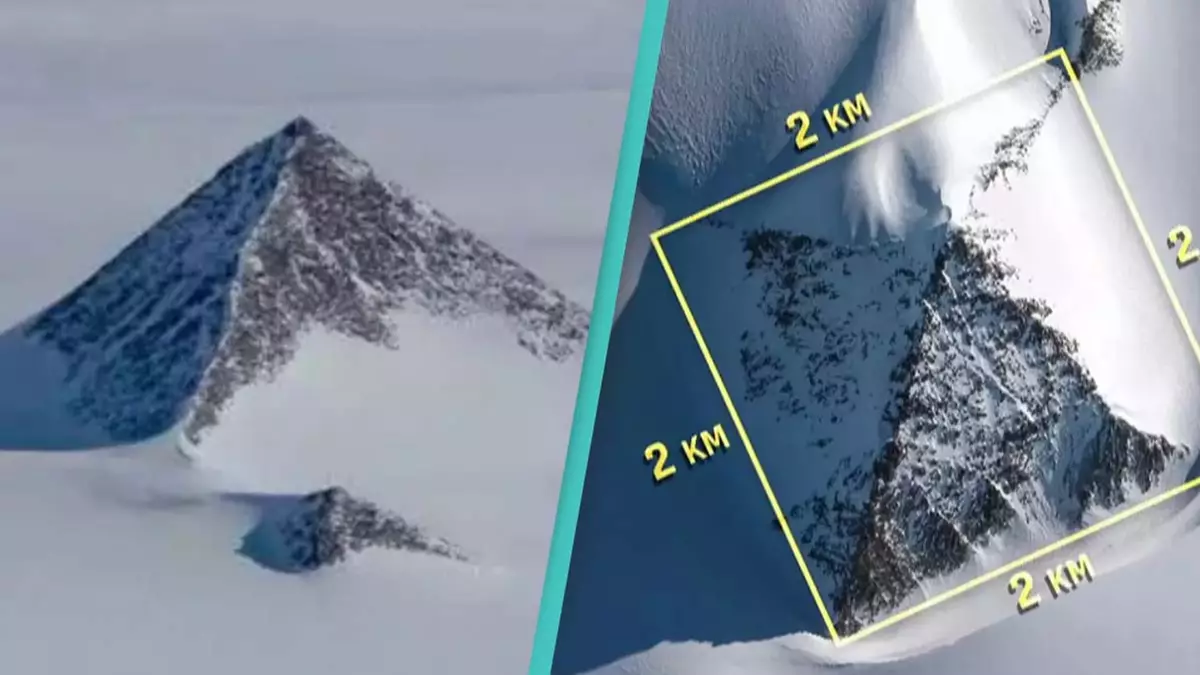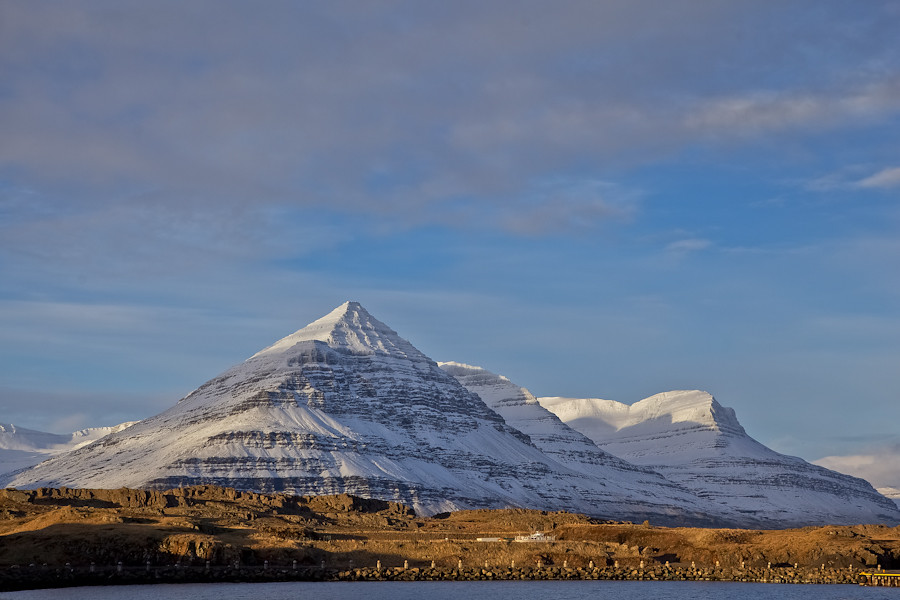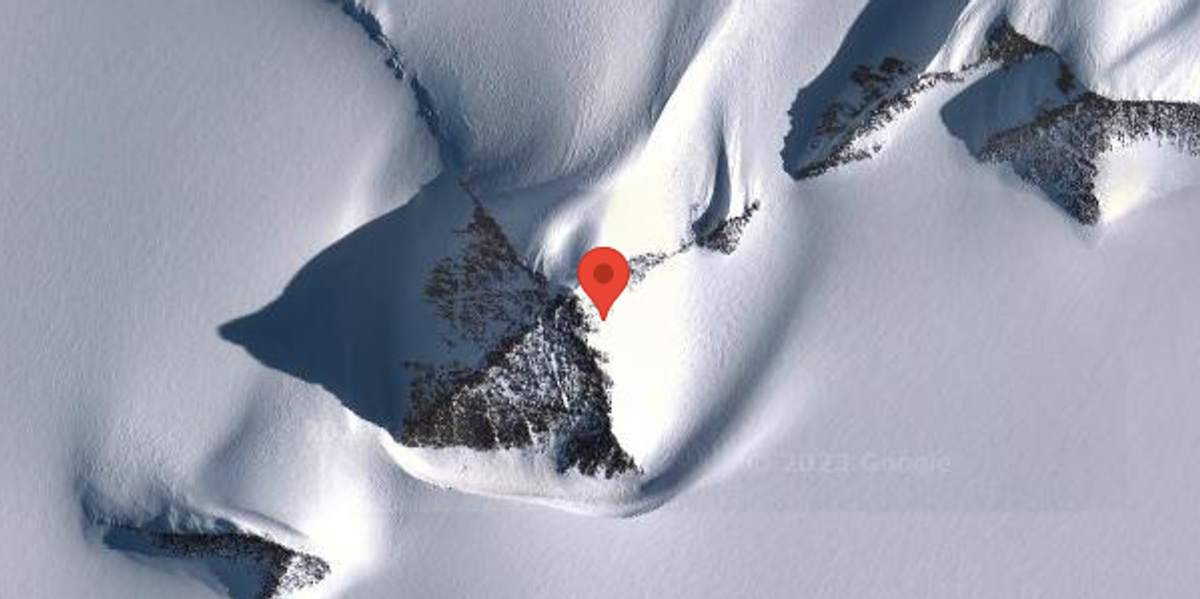
Nunataks are unique geological formations found in polar regions, particularly in Antarctica and Greenland. The term 'nunatak' originates from the Greenlandic word meaning 'lonely peak,' referring to mountain summits that rise above extensive ice sheets or glaciers, creating isolated peaks amidst a vast icy landscape[2][12]. These formations serve as crucial reference points in glaciated areas, aiding navigation and research for scientists exploring these harsh environments[10].
The Misinterpretation of 'Pyramids'

Recent fascination with nunataks has surged, especially due to claims regarding pyramid-shaped mountains in Antarctica. However, many such structures simply result from natural geological processes, specifically glacial erosion that forms distinct peaks. The famed 'pyramids' are not human-made constructs but rather mountain peaks shaped by the convergence of glaciers and their resultant erosive actions[1][3][11]. For instance, the prominent peaks observed in the Ellsworth Mountains, often compared to the Great Pyramid of Giza, are formations created naturally and are referred to as nunataks[1][6].
Formation and Characteristics of Nunataks
A nunatak forms when a mountain summit remains above the advancing ice of a glacier, which typically flows around the peak[12]. As glaciers move, they erode the surrounding landscape, but certain peaks, due to their height and geological characteristics, emerge above the ice. This results in jagged, often pyramidal shapes due to the differential erosion caused by freezing and thawing cycles that impact the mountain’s surface[1][5][7].
In glaciated regions, these features not only present geologically intriguing forms but also host unique ecosystems. The isolation of nunataks allows for the survival of specific plant and animal species that have adapted to extreme climates, making them crucial habitats for biodiversity in otherwise inhospitable settings[2][10].
The Illusion of Ancient Civilizations

The picturesque and abrupt shapes of nunataks have often sparked theories of ancient civilizations, with some claiming that these peaks could be remnants of a long-lost society capable of constructing monumental architecture[9]. Such claims have been widely debunked. Scientific consensus suggests that the natural processes of glaciation and erosion are solely responsible for the formations seen today. Notably, structures identified in satellite images do not support any historical narrative of human construction, as evidenced by geologist Dr. Mitch Darcy, stating that 'this is just a mountain that looks like a pyramid'[3][11].
Notable Examples and Scientific Significance

One of the more famous nunataks is located in the Ellsworth Mountains, discovered during the British Antarctic Expedition of 1910-1913. This region features several peaks that have caught public attention due to their shapes[3][11]. Their scientific significance extends beyond aesthetics; researchers can study the rock and sediment exposed on nunataks to glean information about the Earth’s climate history and geological evolution[10][12].
Furthermore, the geographical distribution of nunataks suggests they acted as refuges during the Quaternary glaciation. As glaciers surged and receded, these isolated peaks provided safe havens for flora and fauna, shaping current ecological patterns as species dispersed from these high-altitude islands[4][8].
Conclusion

While the allure of discovering ancient pyramids in Antarctica captivates the imagination, it is essential to recognize nunataks for what they truly are: products of natural geological processes formed through millennia of glacial activity. These magnificent structures not only provide vital insights into Earth's climatic past and present but also serve as crucial habitats for unique species in the icy wilderness. As scientific research continues to shed light on these amazing formations, our understanding of the Earth's history and ecosystem dynamics will undoubtedly deepen, reinforcing the importance of these solitary peaks in the ongoing narrative of our planet.
Get more accurate answers with Super Pandi, upload files, personalized discovery feed, save searches and contribute to the PandiPedia.
Let's look at alternatives:
- Modify the query.
- Start a new thread.
- Remove sources (if manually added).